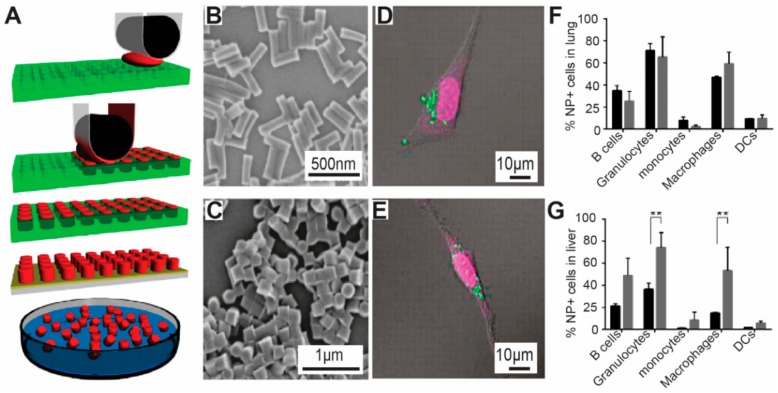Figure 5.
PRINT techniques were used to develop nanoparticles for delivering therapeutic cargos. (A) In PRINT technology, photo-curable perfluoropolyether (PFPE) molds were employed to emboss the materials for producing particles. The PFPE materials have a low surface energy and thus allow the materials to stay in the nano-cavities specifically [85]; (B,C) PRINT techniques allow generation og nanoparticles with controllable shapes and variable aspect ratios. The particles in (B) have a high aspect ratio and those in (C) have a lower one [85]; (D) Hela cells can readily internalize 3 µm cubic PRINT particles; (E) Similarly, Hela cells also take up cylindrical particles (3 µm in height). Comparing the internalization of cubic and cylindrical particles, Hela cells internalize cubic particles more effectively than cylindrical particles [85], with copyright permission from © (2008) National Academy of Sciences; (F,G) Using PRING particles, the DeSimone group illustrated that tumor tissues changed the level of different immune cells in mice. Briefly, tumor-bearing mice (gray bar) have a higher level of macrophages in lung compared to naive mice (black bar) [136]; (F) In the liver tissue, tumor bearing mice have a higher level of B cells, granulocytes, monocytes and macrophages than naive mice (black bar) [136], with copyright permission from © American Chemical Society. With the PRINT particles with controllable features, this work for the first time illustrated that change of body immunity by tumor environment.

